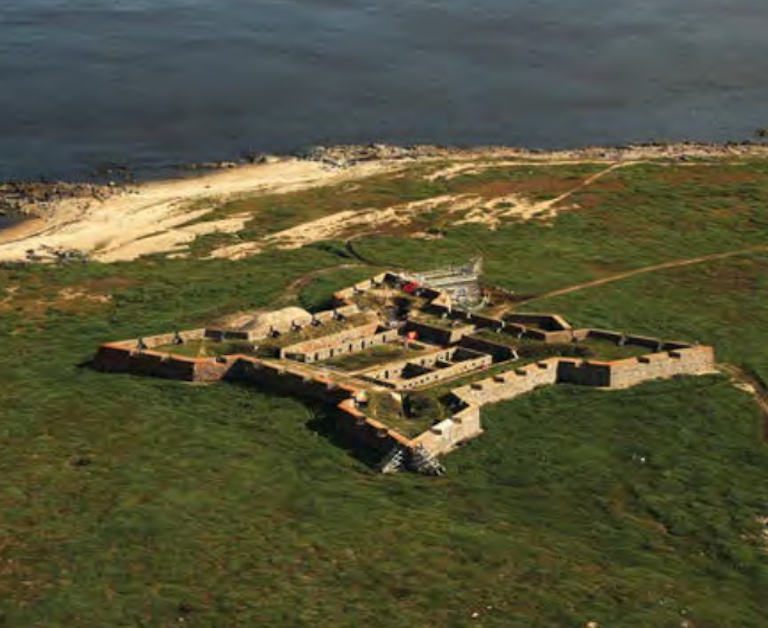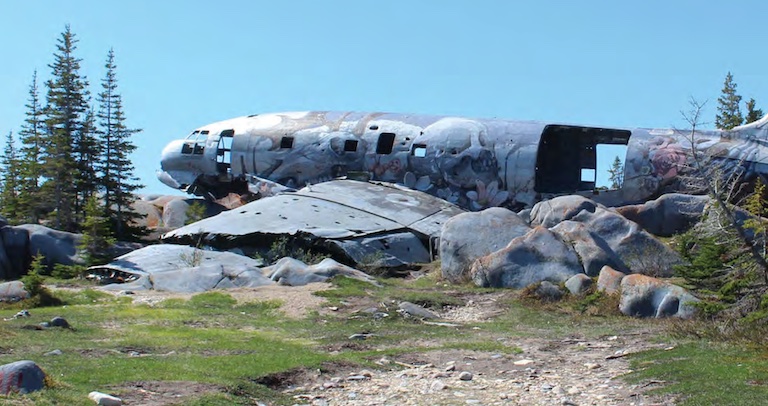Colourful Northern History

As I look out from the coast of Hudson Bay in Churchill, Manitoba, on a warm July morning, gulls call out and fly above me while dozens of beluga whales come near to shore to feed on the spawning caplin. The whales’ bodies gently roll with the waves as they exhale, puffs of water shooting up before each takes a breath and gently dives back down.
At times, I swear the belugas are looking right at me — and maybe they are. Unlike most whales, belugas have a flexible neck and are able to turn their head toward you as they swim by. But a moment like this in vast northern Manitoba is more than just a time to pause, to escape the bustle of life — it’s an opportunity to reflect on how a community as small as Churchill has such a layered history.
The belugas, which create a serene and picturesque scene, and other marine animals like seals and walruses provided food for pre-Dorset and Dorset people — the first to settle in the Churchill region about four thousand years ago — and, beginning about a thousand years ago, for the Thule people, ancestors of today’s Inuit. People in the North relied on wildlife to survive, as Inuit still do in Canada’s Arctic, using animals not only for food but also for shelter, tools, and clothing.
Traditional Inuit beliefs include a deep connection to animals and the belief that animals have souls — meaning that they should be treated with respect. Inuit legends describe animals turning into humans and vice versa. Churchill’s Itsanitaq Museum shares many of these stories while displaying Inuit carvings and artifacts, some of which date back to pre-Dorset people.

You can get up close to taxidermic animals — including a polar bear, a muskox, a walrus, and a wolf — and see ancient handmade kayaks. The history of the local Indigenous peoples is packed into the one-room museum.
Trade played an important role in the lives of the Cree, Dene, and Inuit in what is now northern Manitoba. After European contact in the seventeenth century, Indigenous trading networks were used during the fur-trading era — with the Hudson’s Bay Company’s Fort Churchill, later called Prince of Wales Fort, a hub for the fur trade.
Today Churchill is accessible only by air or by train. While a train ride from Thompson, the nearest Manitoba city, takes at least sixteen hours, the journey through a changing landscape of marshland, the boreal forest, and, eventually, tundra is worth the time.
In 2017, spring floods washed out the rail line, further isolating the town. It was a year before the line was fixed and the train was running again.

Also in 2017, Winnipeg-based artist Kal Barteski organized SeaWalls Churchill to promote ocean conservation and awareness of the community and to bring hope to its residents. The initiative — part of the PangeaSeed Foundation’s Sea Walls: Artists for Oceans program that includes work in fifteen countries — brought together more than a dozen artists to paint murals on buildings in and near the town. One of them painted a crashed cargo plane.
Visitors should make the effort to check out these murals, many of which invite people to learn about the community’s rich history. For example, about sixteen kilometres from town, an abandoned radar station stands near a former rocket range, which closed in 1985 and in 1988 was named a National Historic Site. Abandoned since the 1970s, the radar building today bears a colourful mural, by Jason Botkin, that shows caribou antlers and a person holding out their hands in prayer.
The image pays tribute to the Sayisi Dene First Nation, a community the Canadian government forced to relocate to Churchill from Little Duck Lake, Manitoba, in 1956 after incorrectly assuming that the First Nation was negatively impacting caribou populations.

Many of the murals portray Arctic wildlife — as one might expect, since there is plenty of wildlife to see. For instance, from about June to September thousands of belugas, or “canaries of the sea” — nicknamed for the many vocalizations they make below the water surface — make their way to the area to feed and to give birth in the Churchill River and Hudson Bay.
Polar bears stop by mid-July when the Hudson Bay ice melts, and they stay ashore until the ice starts to form again around November. One of the largest known polar bear maternity denning areas is within nearby Wapusk National Park.
Days after returning from Churchill, I found myself checking over my shoulder to see if a polar bear was following, or charging, behind me — and I hadn’t even seen one during my trip. It’s always best to be bear aware, which is why it’s recommended that travellers book tours with a local guide instead of attempting to see Churchill’s sights on their own.
Rounding out the top reasons to go to Churchill is the aurora borealis, or northern lights. For the best chance of seeing the belugas, polars bears, and northern lights, plan your trip for late August through early September. But don’t be disappointed if you don’t see absolutely everything on your first visit — that just means there’s even more reason to go back.
Themes associated with this article
Advertisement




